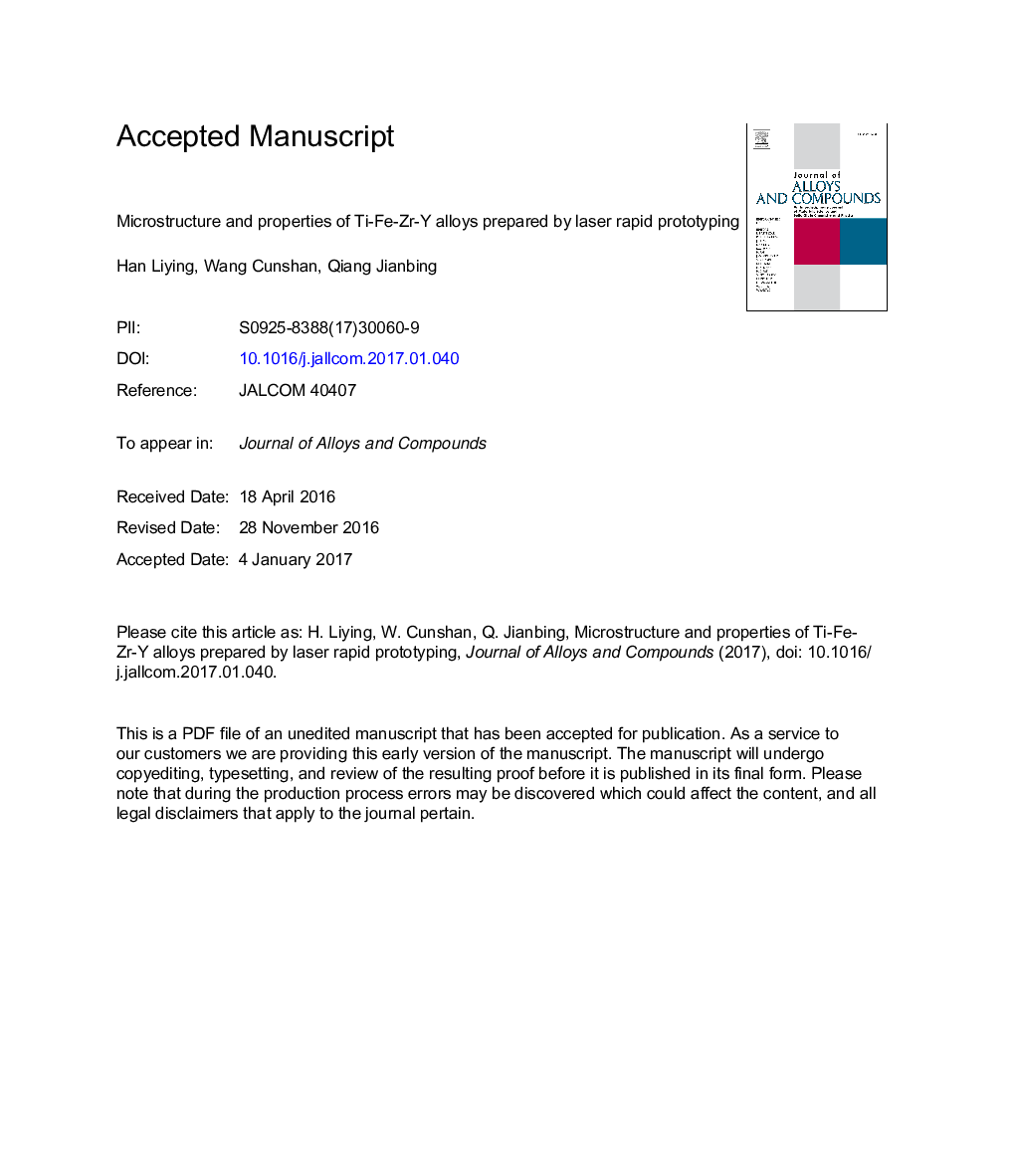| Article ID | Journal | Published Year | Pages | File Type |
|---|---|---|---|---|
| 5460375 | Journal of Alloys and Compounds | 2017 | 38 Pages |
Abstract
From the perspective of biomechanics and forming technology, Ti-Fe-Zr-Y alloys were designed using a “cluster-plus-glue-atom” model, and then the alloys were prepared by laser rapid prototyping on pure titanium substrate. The influences of Zr additions on microstructure and properties of the alloys were investigated. The results show that with the increasing of the Zr addition, the microstructure of the alloys changes sequentially from TiFe dendrite plus (β-Ti+TiFe+Zr2Fe) eutectic to (β-Ti+TiFe+Zr2Fe) eutectic to β-Ti dendrite plus (β-Ti+TiFe+Zr2Fe) eutectic, which leads to gradual decrease in the hardness and Young's modulus. The corrosion resistance firstly increases and then decreases, with the best corrosion resistance obtained at 5.86 at. % Zr addition. Compared with the binary Ti70.6Fe29.4 eutectic and Ti-6Al-4V alloys, the studied alloys present higher hardness, lower Young's modulus, and better corrosion resistance in Hank's solution.
Related Topics
Physical Sciences and Engineering
Materials Science
Metals and Alloys
Authors
Han Liying, Wang Cunshan, Qiang Jianbing,
